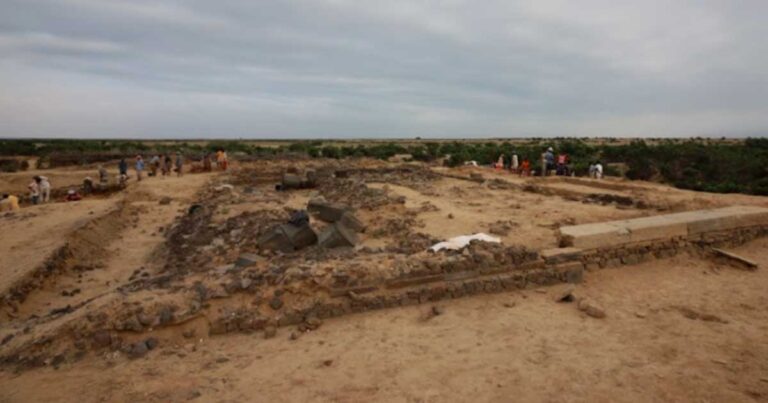
Contemporary excavations within the port metropolis of Adulis on Eritrea’s Purple Coastline have produced proof exhibiting that two historical church buildings unearthed greater than a century in the past had been constructed in the course of the reign of the legendary Kingdom of Aksum, which dominated Northeast Africa all through the complete first millennium AD. Due to an in depth evaluation carried out by a staff of archaeologists from the Vatican-sponsored Pontificio Instituto di Archeologia Cristiana, the 2 historical spiritual buildings have lastly been dated to the mid-1st millennium AD, with dates of building that started no later than the sixth and seventh centuries respectively.
Notably, the Kingdom of Aksum (or Axum) solely transformed to Christianity within the 4th century AD. Because the research authors clarify in a brand new article revealed within the journal Antiquity, securely dated church buildings from Aksum’s early Christian days have been extraordinarily troublesome to seek out, which makes this a extremely necessary discovery.
Christianity within the Kingdom of Aksum
At its peak of energy, the Aksumite Kingdom dominated a lot of the northern Horn of Africa together with an enormous swath of territory in Southern Arabia. The dominion was a recent of the Roman Empire , and in reality functioned as an necessary method station or crossroads that linked merchants from Rome and India, and from all factors in between.
Following a development that was more and more widespread within the Mediterranean area and past, the fourth-century Aksumite chief King Ezana transformed his kingdom to Christianity after ascending to the throne in 320 AD. The primary spherical of Aksumite church building would have begun shortly after that, starting within the heart of the empire (in or across the capital metropolis of Aksum) and spreading out into extra far-flung areas of the dominion after that.
The 2 historical church buildings had been really discovered throughout separate excavations at totally different websites in Adulis, which is abandoned now however was as soon as a thriving northern Purple Sea port metropolis.
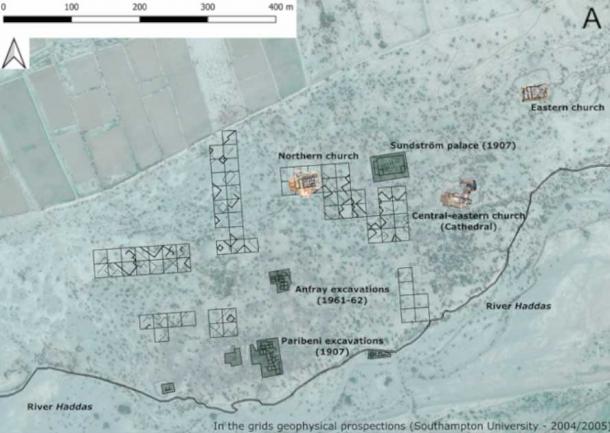
The location of Adulis (S. Bertoldi and G. Castiglia / Antiquity Publications Ltd ).
The ruins of the primary construction had been found close to the middle of the traditional metropolis by archaeologists in 1868. When full and standing this constructing would have been a grand and elaborate cathedral, and it might have included a baptistry the place churchgoers younger and previous might have been formally transformed to the religion.
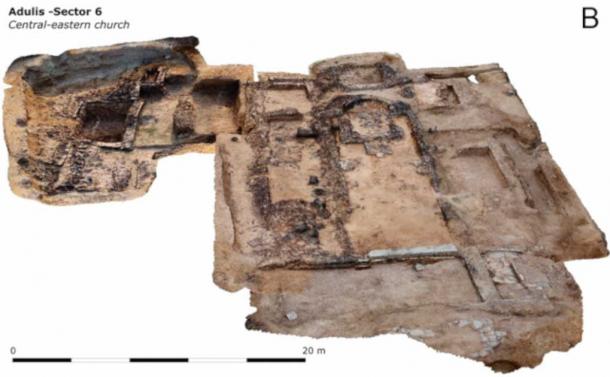
Photogrammetry of the central-eastern church. (S. Bertoldi and G. Castiglia/ Antiquity Publications Ltd ).
The second construction was unearthed within the jap a part of Adulis in 1907. This church would have been smaller than the cathedral, nevertheless it nonetheless would have stood out as a novel addition to town panorama. A sequence of columns discovered on the excavation website revealed it might have been constructed in a round form, with a roof constructed within the form of a dome.
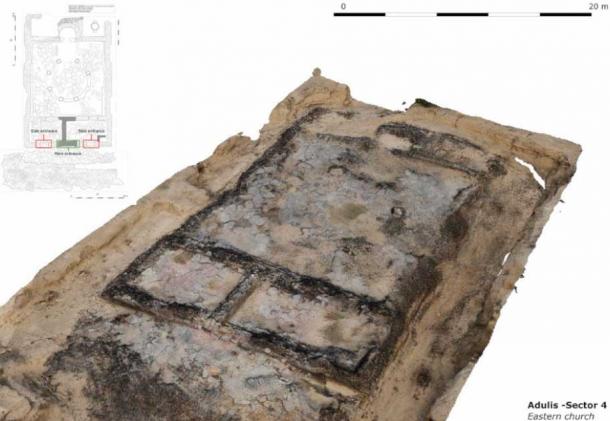
General plan and photogrammetry of the jap church, and you may make out thew circle of the dome in the primary room. (G. Castiglia and S. Bertoldi/ Antiquity Publications Ltd ).
Dr. Gabriele Castiglia led the Pontificio Istituto di Archeologia Cristiana staff in the course of the newest sequence excavations of the 2 church buildings, throughout which natural samples had been taken from the suitable excavation layers in order that radiocarbon relationship checks may very well be carried out.
“This research offers one of many first examples of Aksumite church buildings excavated with fashionable strategies and chronological knowledge coming from fashionable relationship strategies,” Dr. Castiglia defined.
The radiocarbon take a look at outcomes, plus a extra detailed archaeological examination of the websites, confirmed that the cathedral would have been constructed first, between the years the 400 and 535. The domed church would have been erected considerably later, between 480 and 625.
This makes them among the many earliest confirmed Aksumite church buildings ever discovered. They’re additionally the oldest church buildings found in peripheral areas of the Kingdom of Aksumite, whose capital metropolis of Aksum was situated roughly 100 miles (160 kilometers) inland from the buying and selling mecca of Adulis.
Japanese Africa’s Wealthy and Various Non secular Custom Revealed
“Having a exact chronology for these church buildings is essential to understanding how the method of conversion to Christianity formed the geographical and cultural space,” Dr. Castiglia said, summarizing the significance of her staff’s discoveries.
From this angle, the development of those two putting and bold buildings in a port metropolis removed from the Aksumite capital suggests a comparatively fast unfold of Christianity all through the dominion. It’s potential that work on the primary of the 2 buildings started lower than a century after King Ezana’s conversion, which exhibits the individuals of the area should have been open to new non secular perception programs.
Apparently, the stylistic parts of the church buildings reveal a broad vary of influences. The church buildings characteristic architectural touches and design selections that incorporate parts from many traditions. For instance, the cathedral was constructed on a big platform, as Aksumite building practices usually dictated. Alternatively, the domed church appeared to have been deliberately constructed to duplicate Byzantine sacred structure. The Roman emperor and Byzantine Empire founder Constantine’s conversion to Christianity occurred at virtually the identical time as King Ezana’s conversion, which undoubtedly created an curiosity within the affairs of the opposite kingdom throughout the royal and spiritual circles of each.
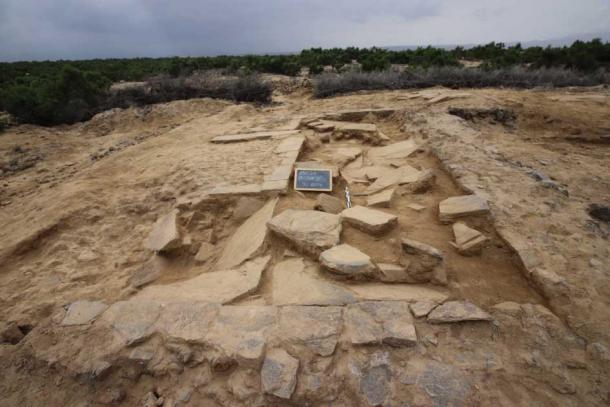
One room excavated close to the doorway to the domed church. (S. Bertoldi and G. Castiglia/ Antiquity Publications Ltd ).
What these stylistic selections recommend is that the church buildings weren’t constructed on the course of the then-Aksumite king, however had been as an alternative constructed to mirror extra localized considerations and preferences. Christianity within the port metropolis of Adulis would have advanced organically, in different phrases, not because of edicts issued from central authorities demanding church buildings be inbuilt a sure method.
The political and financial fortunes of the Kingdom of Aksum declined within the latter half of the primary millennium. This finally result in its conquering and destruction in 960 AD by forces beneath the command of an acclaimed however mysterious warrior-queen named Gudit, who could have been Jewish, pagan or Ethiopian.
Sooner or later earlier than the tip of the Kingdom, presumably due to inhabitants loss within the metropolis of Adulis, the 2 church buildings had been deserted to the forces of nature.
Within the second millennium, nonetheless, when the individuals of the area adopted Islam as their faith, the grounds of the cathedral had been repurposed as a Muslim burial floor. This growth was really fairly extraordinary, based on Dr. Castiglia.
“This is without doubt one of the first instances we now have the fabric proof of re-appropriation of a Christian sacred area by the Islamic neighborhood,” she famous.
Taken as an entire, the stylistic parts of the 2 church buildings and the makes use of they had been put to disclose a fancy and various spiritual historical past in historical jap Africa. Additionally they present what a strong cultural drive early Christianity was, because it forged a large internet and unfold its society-altering affect in lots of instructions all through the primary half of the primary millennium AD.
Prime picture: Excavation of one of many early church buildings present in Adulis, which probably served as town’s cathedral. Supply: Antiquity Publications Ltd
By Nathan Falde